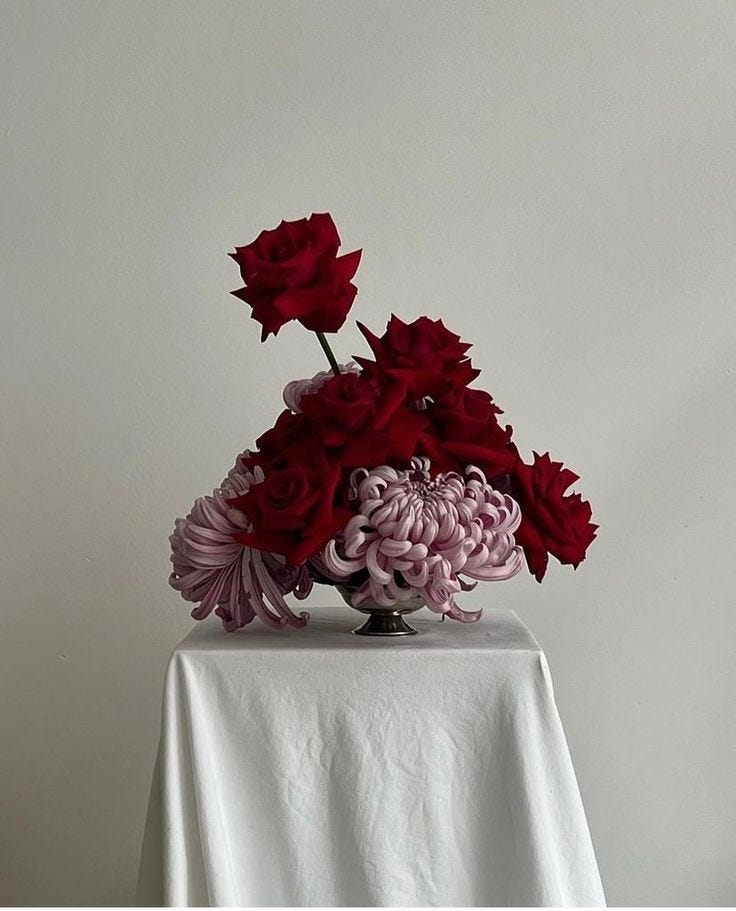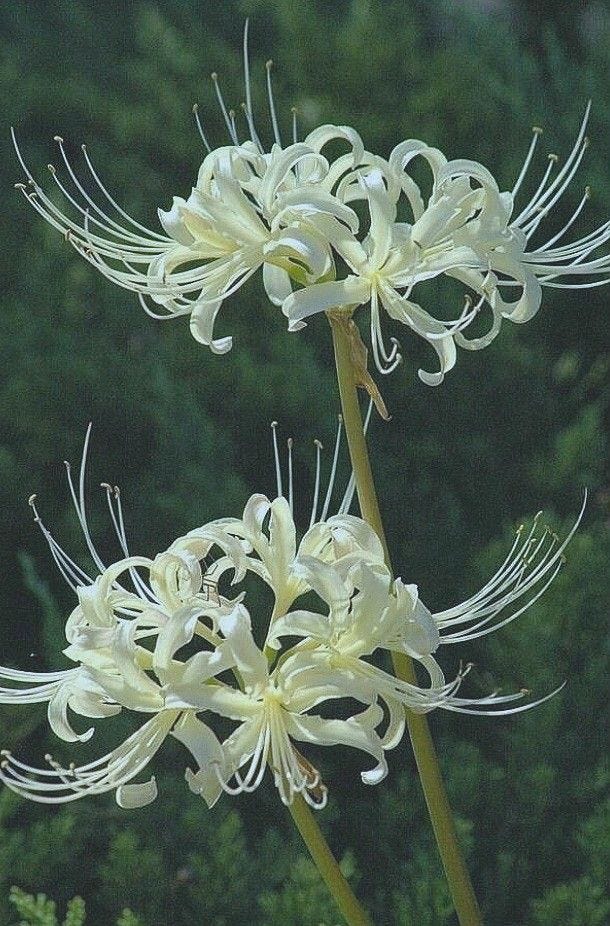I love flowers.
They bring joy, hope and beauty, and they are the best and cheapest way to brighten up any day. My favourite way of practising self-care is by buying myself some beautiful fresh flowers. A frivolous yet loving act of self-care.
I will fly to Japan in less than two weeks, and one of the million things I am outwardly excited to experience is the Japanese's extensive culture around flowers. Nothing inspires and intrigues me more than ancient traditions built around beauty. And what better destination than Japan?
Last weekend, while I was browsing through some new magazines, I came across an article covering the hidden messages behind flowers in Japan. With my upcoming trip, you can be sure that I'll be reading up on anything about Japan. What I discovered is that Japanese flowers have deep symbolic meanings that can be linked to Japan’s Buddhist heritage. Offering flowers to Buddha was an original part of ikebana, the ancient tradition of Japanese flower arrangement.
Flowers like spider lilies, in Japanese folklore, are said to grow 'on the other side of the river,' the one you reach after passing away. These peculiar flowers are often seen near graves, fully blooming during the autumnal equinox. They symbolize the end of the journey, the final destination after one's adventure in the river of life. While this may sound a bit dark, I found it incredibly fascinating. As I delved deeper into my research, I discovered that other flowers, like Sakura, the renowned cherry blossoms, represent the brief yet beautiful nature of existence. Others, like the Ume, or plum blossoms, hold a more positive symbol of hope and patience. They are often mentioned in art and poetry as a metaphor for overcoming challenges and looking forward to brighter days. According to Japanese beliefs, just by touching them, we receive a delicate reminder that we, as human beings, are part of nature too.
I must confess that the spiritual side of me really enjoys this very much, as it feels like the perfect excuse for buying overpriced flowers that will miserably die after 5 to 10 days.
Sometimes it is necessary for dreamers like me, to create narratives, flying high in our dreamer’s cloud and all these flower stories just added extra joy to such a small act like buying a bunch of petals for yourself.
We all need to dream a little! My way to do it is writing, buying flowers, and indulging in fashion. And Japan sounds to me like the country for real dreamers, so there’s no doubt it is the perfect destination for creative inspiration.
Its ancient traditions, shaped by centuries of isolation, perfectly coexist with futuristic inventions and the super-fast pace of its capital, Tokyo. It is no coincidence that the Land of the Rising Sun is home to some of the most talented dreamers, aka fashion designers, to have ever existed. Rei Kawakubo, Issey Miyake, and Yohji Yamamoto, just to name a few, were the pioneers who introduced androgyny and asymmetry into fashion, shaping Japan’s aesthetic and influencing the West.
Japanese culture has inspired many famous European designers, such as Alexander McQueen, Yves Saint-Laurent, John Galliano, Martin Margiela, and Cristóbal Balenciaga, who fell in love with the country and paid homage to it by creating their interpretations of the unmistakable Japanese kimono or incorporating oriental-inspired elements into their collections.
And learning more about the 'way of flowers,' flowers in general, and the power of ikebana, I couldn’t help but notice that some of its concepts keep recurring in modern fashion history.
The philosophy behind ikebana, in fact, emphasises simplicity, understated elegance, and, together with a strong respect for nature, aims to create beauty. This really reminds me of the pillars of some famous fashion brands of recent times (apart from the love for nature, but that’s a rant for another time). Ikebana is an art that has a real connection with how garments are conceived and created—the fulfillment of a dream, the shaping of an idea, the need to create something beautiful to be surrounded by.
"I don't design clothes. I design dreams." Ralph Lauren "I believe there is hope in design. Design evokes surprise and joy in people." Issey Miyake
So in my infinite research of beauty, my love for fashion and flowers collided in the discovery of what are the fundamentals of this ancient Japanese tradition. Here are the pillars of this astonishing art, and some fashion images they reminded me of:







